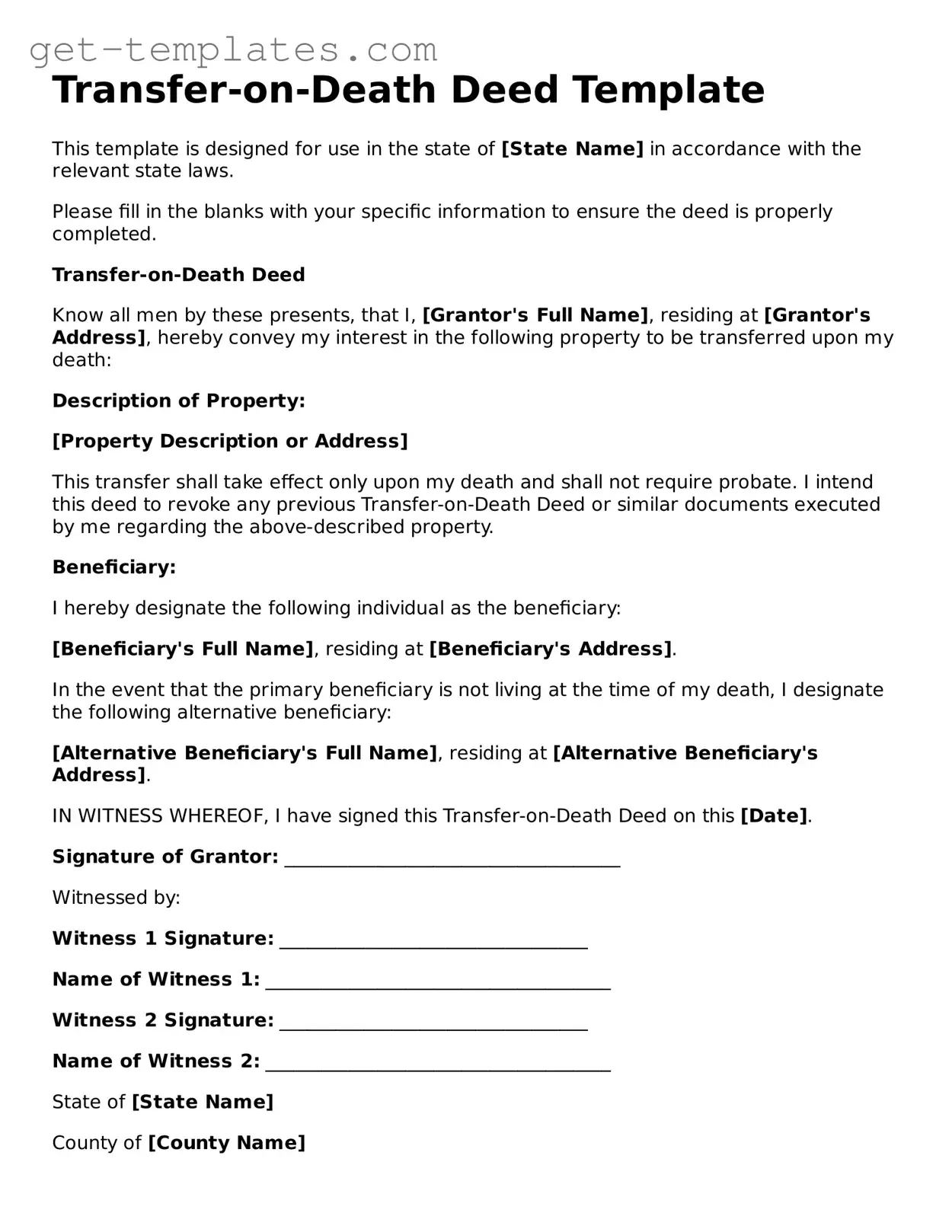Transfer-on-Death Deed Template
This template is designed for use in the state of [State Name] in accordance with the relevant state laws.
Please fill in the blanks with your specific information to ensure the deed is properly completed.
Transfer-on-Death Deed
Know all men by these presents, that I, [Grantor's Full Name], residing at [Grantor's Address], hereby convey my interest in the following property to be transferred upon my death:
Description of Property:
[Property Description or Address]
This transfer shall take effect only upon my death and shall not require probate. I intend this deed to revoke any previous Transfer-on-Death Deed or similar documents executed by me regarding the above-described property.
Beneficiary:
I hereby designate the following individual as the beneficiary:
[Beneficiary's Full Name], residing at [Beneficiary's Address].
In the event that the primary beneficiary is not living at the time of my death, I designate the following alternative beneficiary:
[Alternative Beneficiary's Full Name], residing at [Alternative Beneficiary's Address].
IN WITNESS WHEREOF, I have signed this Transfer-on-Death Deed on this [Date].
Signature of Grantor: ____________________________________
Witnessed by:
Witness 1 Signature: _________________________________
Name of Witness 1: _____________________________________
Witness 2 Signature: _________________________________
Name of Witness 2: _____________________________________
State of [State Name]
County of [County Name]
On this [Date], before me, a notary public, personally appeared [Grantor's Full Name], known to me (or satisfactorily proven) to be the person named herein, who acknowledged that he/she executed the same for the purposes herein contained.
Notary Public Signature: ________________________________
My Commission Expires: _______________________________
